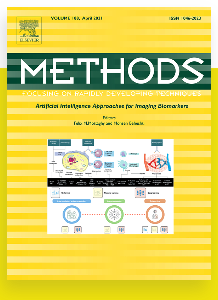Document type : Scientific article published in Methods
Authors: Nicolas Wagner, Marie-Madeleine Mialon, Karen Helle Sloth, Romain Lardy, Dorothée Ledoux, Mathieu Silberberg, Alice de Boyer des Roches, Isabelle Veissier
Preview: Disease and stress can disrupt the circadian rhythm of activity in animals. Sensor technologies can automatically detect variations in daily activity, but it remains difficult to detect exactly when the circadian rhythm disruption starts. Here we report a mathematical Fourier-Based Approximation with Thresholding (FBAT) method designed to detect changes in the circadian activity rhythm of cows whatever the cause of change (typically disease, stress, oestrus). We used data from an indoor positioning system that provides the time per hour spent by each cow resting, in alleys, or eating. We calculated the hourly activity level of each cow by attributing a weight to each activity. We considered 36-h time series and used Fourier transform to model the variations in activity during the first and last 24 h of these 36-h series. We then compared the Euclidian distance between the two models against a given threshold above which we considered that rhythm had changed. We tested the method on four datasets (giving a cumulative total of ~120000 cow*days) that included disease episodes (acidosis, lameness, mastitis or other infectious diseases), reproductive events (oestrus or calving) and external stimuli that can stress animals (e.g. relocation). The method obtained over 80% recall of normal days and detected 95% of abnormal rhythms due to health or reproductive events. FBAT could be implemented in precision livestock farming system monitoring tools to alert caretakers to individual animals needing specific care. The FBAT method also has the potential to detect anomalies in humans to guide healthcare intervention or in wild animals to detect disturbances. We anticipate that chronobiological studies could apply FBAT to help relate circadian rhythm anomalies to specific events.




